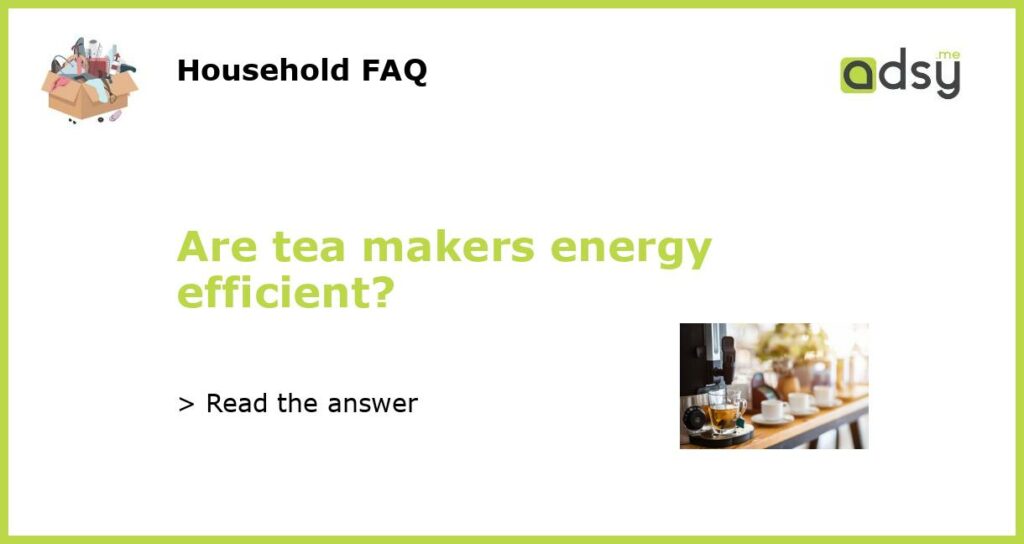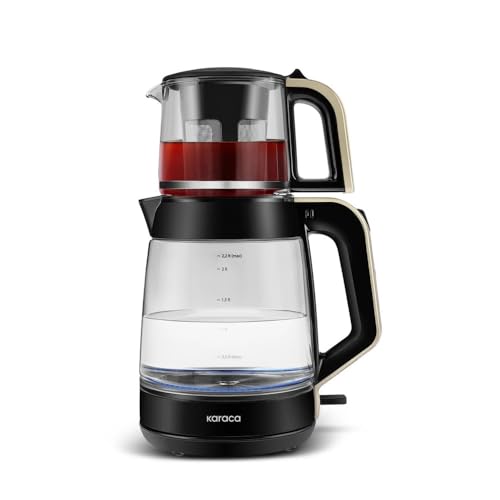Tea Makers Energy Efficiency Explained
Tea is a beloved beverage that is enjoyed by millions of people around the world. It is often prepared using a tea maker, which is a small appliance that heats water and brews tea. However, many people may wonder if tea makers are energy efficient. In this article, we will explore the energy efficiency of tea makers and discuss ways to make them more eco-friendly.
Understanding Energy Efficiency
Energy efficiency refers to the ability of an appliance to accomplish its intended purpose while consuming the minimum amount of energy possible. When it comes to tea makers, their energy efficiency can vary depending on factors such as the type of tea maker, its design, and its features.
Factors Affecting Tea Maker’s Energy Efficiency
There are several factors that can affect the energy efficiency of tea makers. Some key factors to consider include:
- Size and capacity: Smaller tea makers often require less energy to heat and boil water compared to larger ones.
- Insulation: Tea makers with good insulation can retain heat better, reducing the amount of energy needed to maintain the water temperature.
- Power usage: Tea makers with higher power ratings will generally heat water faster but may consume more energy as a result.
- Automatic shut-off: Tea makers with automatic shut-off timers can save energy by turning off the device when the tea has finished brewing.
- Standby power: Some tea makers continue to draw power even when not in use, so choosing a model with low standby power consumption can help improve energy efficiency.
Improving Energy Efficiency
While tea makers can be convenient, there are ways to make them more energy efficient:
- Opt for a smaller tea maker: If you usually make tea for one or two people, consider purchasing a smaller tea maker that requires less energy.
- Choose a tea maker with good insulation: Look for models that have good insulation, as this can help retain heat and reduce energy consumption.
- Preheat the tea maker: Preheating the tea maker by pouring hot water into it before starting can help reduce the time required for the tea maker to reach the desired temperature, saving energy.
- Use the right amount of water: Avoid filling the tea maker with more water than necessary, as this will require more energy to heat up.
- Consider alternative brewing methods: If energy efficiency is a priority, consider alternative brewing methods such as using a stovetop kettle or a teapot.
Tea makers can be energy efficient depending on various factors such as size, insulation, power usage, and features like automatic shut-off. By understanding these factors and taking steps to improve energy efficiency, tea makers can be a more environmentally friendly choice for tea enthusiasts. Consider the tips discussed in this article to make your tea-making experience more energy efficient.



![Breville HotCup Hot Water Dispenser | 2.0L with 3kW Fast Boil & Variable Dispense | Energy-efficient use | Gloss Black [VKJ318]](https://m.media-amazon.com/images/I/41SWc-gcjdL.jpg)


